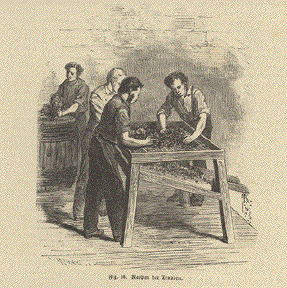
I’ve really been getting into blends.’ A phrase I often hear, and I wonder why? Blending of various varietals has been a norm in winemaking since before the Greeks! 99.9% of Bordeaux wines are blends, and how about the Southern Rhone with its holy trinity of grenache, syrah and mourvèdre?! Yet why is it that I keep hearing this phrase. Why does the concept seem novel? Let’s take a quick look.
‘Field blend’ is a term that once defined a blend that had everything in it but the kitchen sink (more or less), with nearly no rhyme or reason as to how it was blended. Wineries would literally have a vineyard of mixed grapevines with nothing distinguishing one varietal from another, and harvest and ferment them together with hopes of producing a drinkable wine. Vineyards were planted with several different varieties and the grapes were harvested together and fermented together to produce a single wine. Why did they do that you ask? When making wine with little equipment to spare for separate vinification of different varieties, field blends allowed effortless (though inflexible) blending. Blending was the norm for many centuries and still is, even if to simply follow tradition.
Nowadays a ‘field blend’ is completely defined by the intentional blending of varietals. Each varietal is added for a particular reason… to give color, tannin, acidity, etc… The percentages of each indi- vidual varietal is important in order to create a balanced wine. Even with huge leaps in technology, different varietals are still sometimes co-harvested, co-fermented, or sometimes both! By controlling the production to such a degree the guess work of the drinkability of an actual field blend is no longer in question. Something good, not just drinkable, can be produced. The result is simple…a recipe for success. This allows the winery an opportunity to repeat the blend if it is of both good quality and appealing to the consumer. Producing wine in this manner seemingly cancels out vintage variation and allows the consumer ease of mind in knowing they will be able to get the same wine next vintage.
We often think of wines by their varietal name, but not all wines are made from just one varietal. When wine was first introduced to the US it was not produced the way they are now with one grape varietal, but instead produced as field blends with vague names like Claret which were applicable then, but less so now. This method, however, would later be replaced by single varietal wines with only the best wines being available as blends. These were given propri- etary names like Opus One, Cask 23 and Georges de Latour (named after a Frenchmen who revolutionized the landscape of California wine in the 20th century), just to name a few. With the downturn of the economy and waning interest in single varietal offerings, wineries have had to find innovative ways to sell their wines without damaging their reputation. In some cases, wineries have turned to blends because of a challenging vintage. If it’s too cold for Cabernet to ripen, add a bit more Merlot because it ripens earlier. “Necessity is the mother of innovation.”
American producers are finding that they can make good wine from a blend of different varietals, sometimes better than a single varietal wine. This isn’t anything new, but for the native American wine culture it is. I think that it’s a sign of maturity. Rather than focusing on the different ways to harvest, ferment and age one particular varietal, producers will be able to focus on understanding what grows well in a certain region. But that’s another conversation for another time. I’m into blends, are you?
